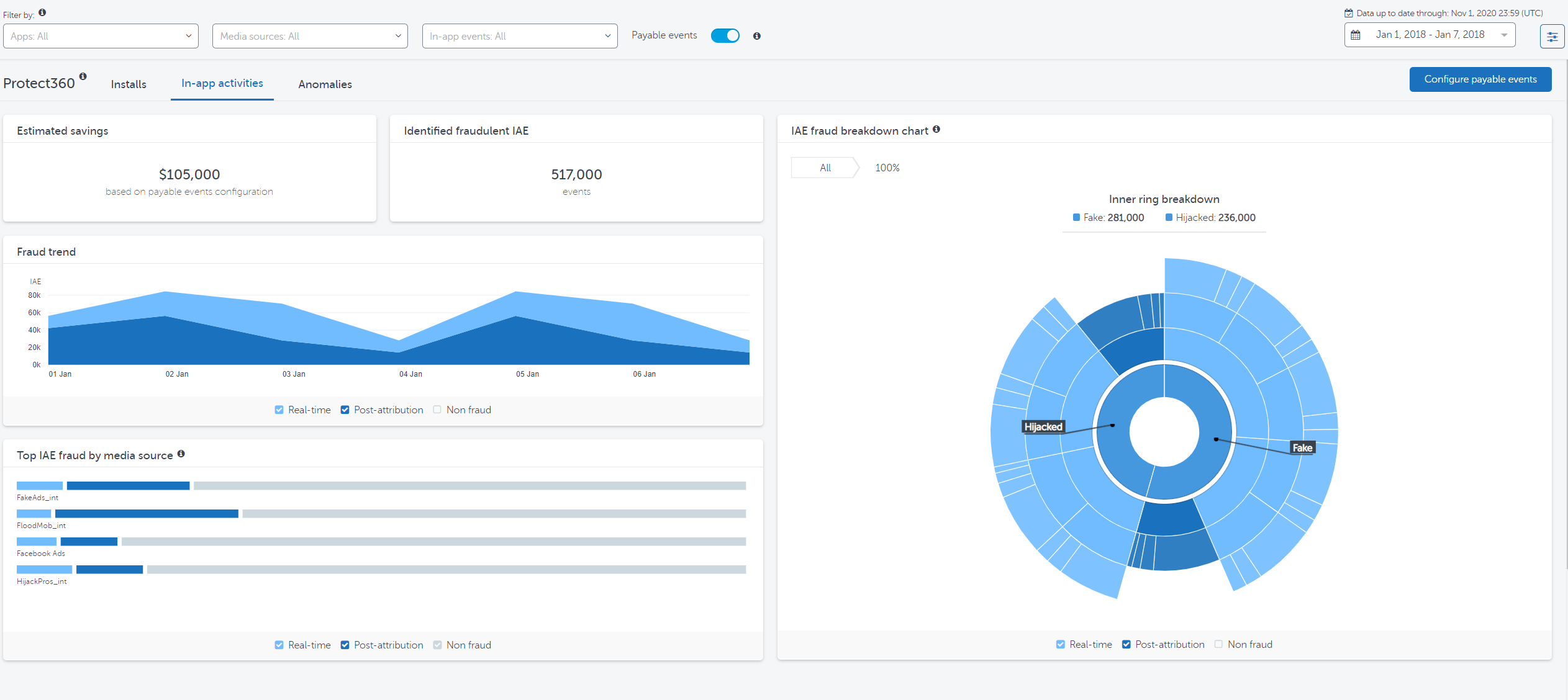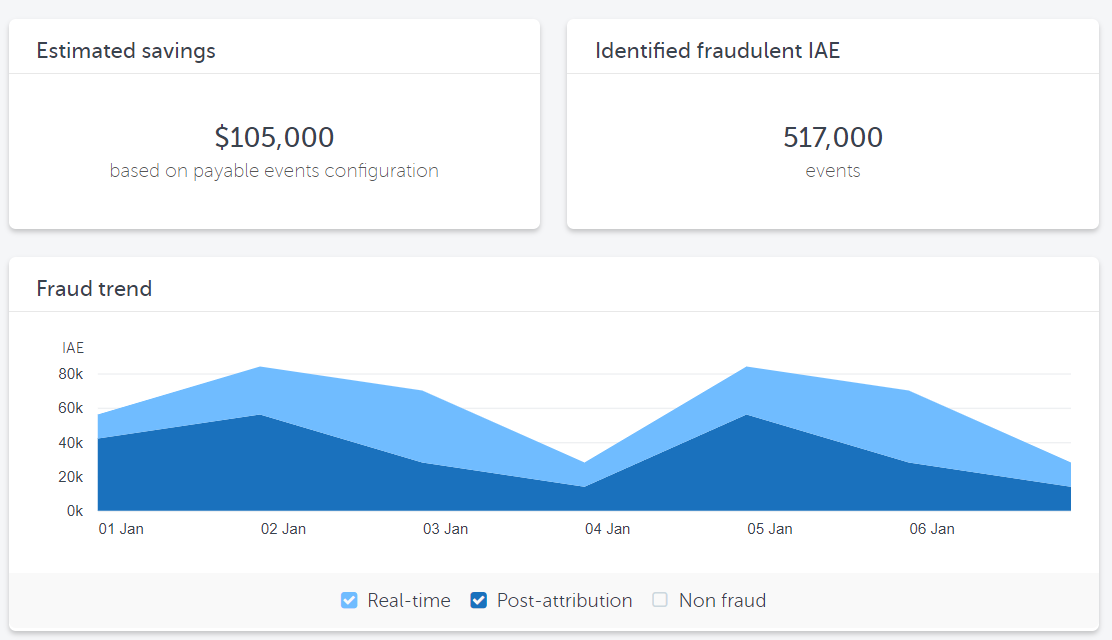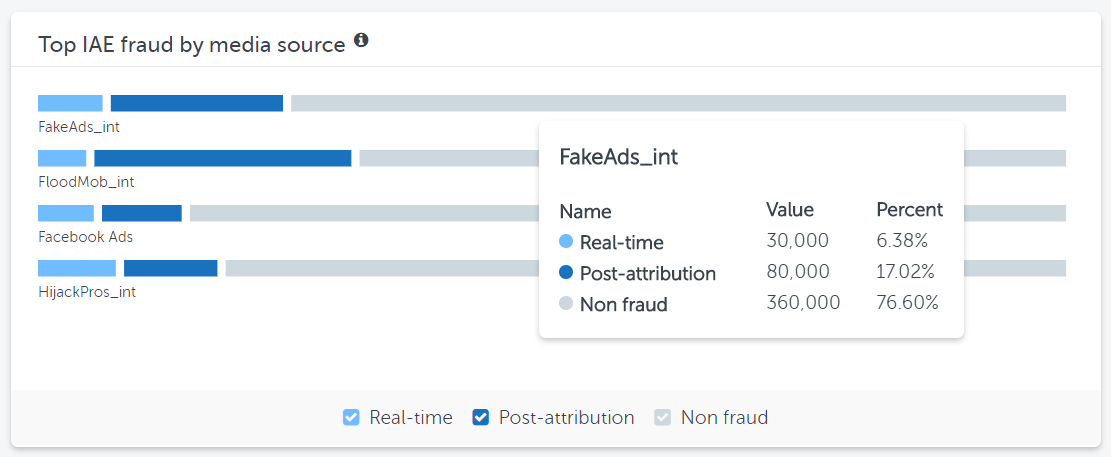Nội dung
Over the past several years we’ve noticed a shift with advertisers and their campaign strategy moving from strictly CPI based campaigns to a mix of CPI and CPA, with some advertisers going as far as relying solely on CPA.
This transition makes perfect sense, as campaign performance is no longer measured solely through user click-to-install conversion rates. User LTV (Lifetime value) has long been the measuring stick for a successful user-acquisition operation, and you can’t determine LTV without deep in-app data.
Alongside the clear benefits of measuring various points within the user journey and rewarding publishers accordingly, comes the inevitable risk of fraud. In-app and CPA fraud has long been discussed by AppsFlyer, and has been labeled by many as the next frontier in the ongoing battle against mobile ad fraud.
AppsFlyer’s recent State of mobile ad fraud – 2020 edition paints a grim picture of in-app fraud rates hitting unprecedented numbers. Some app verticals show greater risk of in-app and CPA fraud, and unsurprisingly these verticals are the ones who have adopted in-app data and measurements the most.
These stats highlight a contradiction with common industry beliefs that CPA campaigns aid in preventing fraud. While they have introduced a new layer of data that helps mitigate fraud to a level, they are now themselves the target of modern fraud methods.
The equation is simple – fraudsters follow the money, and right now, the money lies beyond the install attribution.
In-app activity measurement can be used for two main objectives:
- Measure user activity across key points across the app experience to determine everything from app functionality to user LTV
- Reward media sources for delivering users who reach specific checkpoints within the app – CPA
While only the latter directly relates to monetary value, both objectives can be manipulated to affect an advertiser’s view of a certain media channels’ value.
Spoofing in-app event logs can create a false image of value in an attempt to whitewash fraud at an install level, as event engagement can be presented in an attempt to determine user legitimacy.
When reviewing CPA events the stakes are higher.
CPA rates can often reach over 10X the amount of their associated CPI rates, as they represent higher value and user quality. A savvy fraudster can do the simple math of one successful CPA fraudulent activity potentially generating a return greater than ten or more installs. This requires greater sophistication and technological abilities; however, in return, fewer successful actions are required to generate an equal payday.
The fraudster can settle for fewer actions, meaning lower chances of attracting unwanted attention from anti-fraud solutions. A smart fraudster could even be falsely considered as a quality media source by some advertisers who only measure media quality by general CPA activity.
Does this mean that these verticals should drop their in-app measurement efforts?
Of course not.
In-app measurement advantages easily outweigh the disadvantages presented by new forms of fraud.
However, a new method of measuring, reviewing, and acting based on in-app data is required. Advertisers can no longer settle for a skim of their data to draw deep conclusions.
Deep-dive into your app data
The only way to efficiently fight fraud is through data.
The more data you have, the better equipped you will be in understanding where the perpetrator is, its volumes, methodologies, and most importantly, how to handle it.
In-app and CPA fraud data has been available through AppsFlyer’s fraud protection solution, Protect360’s raw data reports for a while, we are proud to introduce the latest addition to Protect360’s anti-fraud suite: the In-app activity dashboard.

The new in-app fraud activity dashboard separates in-app fraud activity from install fraud. These are foundation discussion points that should be analyzed and treated differently.
Our, first of its kind, dedicated dashboard makes your in-app fraud investigation work significantly easier.
Presenting you with all of the in-app and CPA activity that is blocked in real-time or in post-attribution.
Saving time and money

The dedicated fraud overview widgets highlights the general status of your current in-app fraud activity. The overview will present both the overall volume of identified fraudulent events and an estimation of savings associated with the identified activity.
The estimated savings are of course dependent on the information you provide AppsFlyer. The more accurate the CPA valuation per event will be, the more accurate the savings estimation is.
The fraud trend chart will break down your in-app fraudulent activity by real-time blocks and post-attribution detection per the defined time frame. Post-attribution detection is relevant not only for install attribution, but also for in-app activity.
As mentioned above, some fraudsters will deliberately set their sights on your in-app activity, disregarding the install CPI. This breakdown is crucial for better understanding where sophisticated fraud lies and what sources deliver it.
Your very own in-app fraud index

The Top IAE fraud by media source widget acts as an indicator for specific media partners who are responsible for highest in-app fraud volumes. Each partner’s activity will be broken down by real-time fraud, post-attribution fraud, and their non-fraudulent activity in percentages (%).
Keep in mind that while it may seem like an easy hit-list, this is merely the first step of your necessary investigation. The next step will be to explore each partner’s data, identifying specific site IDs, and treating these issues together with your partners to construct a mutually beneficial media portfolio.
The exploration is necessary and can be carried out via the breakdown table (at the bottom of the screen) and through your raw data reports.
Hands on the wheel

The In-app fraud breakdown chart is a dynamic and responsive visualization for your in-app fraud data. Hovering over any of the chart’s layers will provide insight of the indicated section like: fraud type, channel, volume, and more.
It further provides specific details of each section within its layer.
Clicking on a specific section within the layers will restructure the chart and provide a deeper view into the chosen layer’s details and the layers constructing it.
It is best to start your drill-down process from the inner layers of the chart and work your way through the dynamic pie charts as they unfold.
For example, begin with a general overview of fake installs vs. hijacked installs, drilling down into fake in-app events, then see how many were created following fake installs, at which you can then identify which media partners delivered this activity, and at what volume.
Uncover the truth

Similarly to install fraud, a general overview of your activity isn’t enough. The in-app event fraud breakdown table provides the information required for any thorough investigation of in-app fraudulent activity.
Digging deeper into each media partner’s activity breakdown will help identify specific fraudulent site IDs within their activity. Using the chart wisely with all the tools reviewed here, alongside raw data reports, will aid in constructing a quality media portfolio and in-turn minimize the presence of in-app and CPA fraud to your campaigns.
What’s next?
The in-app fraud activity dashboard is one more step towards AppsFlyer’s long standing ambition of providing its customers and partners a fraud-free ecosystem.
We understand that in-app fraud is the next challenge for mobile ad-fraud, with fraudsters adapting to new market realities and opportunities presented by the growth of CPA campaigns and in-app activity measurements.
Future developments are still to come, as integrations with additional AppsFlyer capabilities are planned to ensure a more comprehensive protection layer. Offering custom capabilities at defining, event-level, rules to eliminate risks of sophisticated fraud by utilizing each developer’s own activity logic, and more.
Looking ahead, empowering our customers with tools that allow deeper control over sophisticated fraud methods that affect more than install attribution is paramount for us.
Stay tuned.